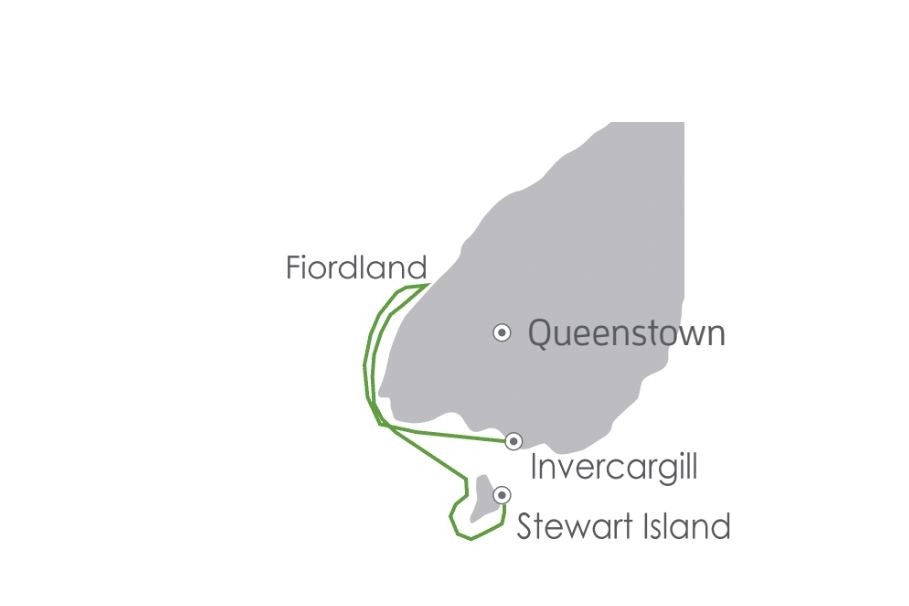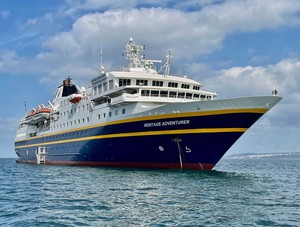
Join Heritage Expeditions, pioneers in authentic small ship expedition cruising, as we explore New Zealand’s remote southern backyard on this special voyage. Discover the time-forgot rawness of wildlife rich Stewart and Ulva Islands before exploring the primordial majesty of Fiordland where clouds scud ragged peaks of glacier-cleaved mountains only accessible by expedition ship, and the rare opportunity to combine these iconic destinations on one voyage.
Rich in history and wildlife, Stewart and Ulva Islands are home to a unique range of birdlife including Bellbird, Tui, Kaka, Tomtit, Rifleman, Stewart Island Robin, Saddleback, Mohua and of course, the Stewart Island Brown Kiwi. There will be opportunities to listen to the native bird song and enjoy the golden sandy beaches, before taking the time to take a closer look at the history of Paterson Inlet.
As we expedition cruise up the lower west side of New Zealand’s South Island, we prepare for the grand scale scenery of Fiordland. In the calm waters of Fiordland, and away from the crowds, we can expect to encounter playful New Zealand Fur Seals, curious Dusky Dolphins, elusive birds and enjoy endless stunning vistas.
During our time here we plan to Zodiac cruise glittering waterways amid the podocarp forest- cloaked spines of Anchor and Resolution Islands and the tiny islands of Dusky Sound where orchids, flame-tipped Rata and clusters of alpine tree daisies put on an impressive floral display.
On predator-free Anchor Island, home to half the world’s population of Kakapo as well as Little Spotted Kiwi, we’ll walk around Lake Kirirua, its surface reflecting the surrounding forest, before arriving at historic Luncheon Cove – a location of New Zealand firsts including first sealing gang, first European settlement and the first ship built.
Discover hidden inlets, coves and beaches as we Zodiac cruise Sportsman Cove and explore Cooper Island. Our passion for helping protect and share New Zealand’s special wilderness remains as strong as it was back in 1985. Join us as we discover the real Fiordland and Stewart Island.
- Enjoy Stewart Island
- Explore Fiordland
Prices quoted here are often dependent on currency fluctuations. Please check with (01432 507450 or info@small-cruise-ships.com) for the very latest price, which may well be cheaper than the one advertised here.
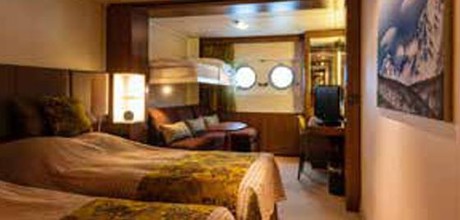
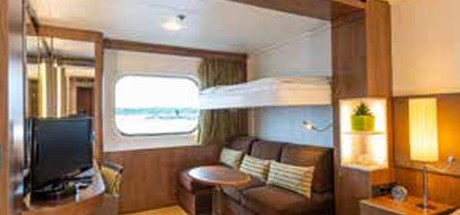


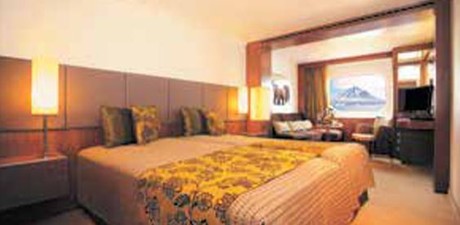



Prices quoted here are often dependent on currency fluctuations. Please check with (01432 507450 or info@small-cruise-ships.com) for the very latest price, which may well be cheaper than the one advertised here.








Guests should make their way to the designated hotel where we will spend the first night of the expedition. This evening there will be an informal get-together at the hotel for dinner; an excellent opportunity to meet fellow adventurers on your voyage and some of our expedition team.
Today we enjoy breakfast in the hotel restaurant before departing for the Port of Bluff and Stewart Island before embarking your ship. New Zealand’s third island is well off the usual beaten tourist track. It is a wonderfully tranquil place; the scenery of untouched bushland is stunning. We will enjoy exploring Ulva Island which is rich in history and wildlife, being a predator-free island from 1997 the bird song and wildlife is some of the best. In Paterson Inlet you will have time to explore the sandy beaches of Boulder Bay and West End Beach or just enjoy some time around Post Office Bay and Sydney Cove. Some of the wildlife you may get to see while walking the tracks on Ulva Island include Stewart Island Robin, Stewart Island Weka, South Island Kaka, Kereru (wood pigeon), Mohua (yellowhead), Red Crowned Parakeet, Fantail, Bellbird and Tui. There are many more species that may also be seen, our knowledgeable expedition guides will be listening for bird calls and keeping a close watch in overhead canopies and the surrounding shrubs to identify further species. In the afternoon we turn our attention to other parts of Paterson Inlet and visit the historic Norwegian whaling station in Prices Inlet and Kaipipi Bay, where from 1923 and 1933 the Ross Sea Whaling Company of Sandefjord, Norway ran a repair base in Prices Inlet where chaser boats were serviced in preparation for the Antarctic summer. There may be an opportunity to explore the quirky town centre of Oban in Halfmoon Bay where a drink with a view can be enjoyed at the iconic South Sea Hotel.
We have three days to explore the incredible wilderness of fiords in the south-west corner of the South Island. This is an area rich in history, majestic scenery and abundant in wildlife. Fiordland was well known to local Maori people, with the demi- god Tu-te-raki-whanoa being said to have used his adze, Te Hamo, to carve out the region’s fiords. Captain Cook and his crew landed here on HMS Resolution in 1773, they were the first Europeans to visit Fiordland, subsequently spending five weeks in Dusky Sound. Cook’s records of his discovery and maps attracted sealers and whalers not long after who then formed the first European settlements of New Zealand, historically this region is very important and shaped the future of the country. From the middle of the 19 th Century this unexplored interior Fiordland coastline attracted the attention of those in search of hidden greenstone or New Zealand jade, and surveyors seeking to understand this region further. Fiordland’s West Coast is only accessible by sea, making it the most remote region of New Zealand’s mainland. Waterfalls, streams, rivers and fiords are enveloped with misty veils that come and go, revealing steep gradients of mountain peaks and sheltered valleys. A rugged terrain, the thickly forested floors are covered with ferns, lichens and mosses. Bottlenose Dolphins, Fiordland Crested Penguins and Little Penguins are all residents of the fiords; during our time here we will look out for them. Our schedule gives us the flexibility to visit as much as possible, areas we plan to visit during our time in Fiordland include Doubtful and Dusky Sounds, Acheron Passage, Astronomer’s Point and Pickersgill Harbour. Our final plan will be determined by the weather. The Captain and Expedition Leader will work hard to make the best use of our time in this incredible region of New Zealand, including areas that even few New Zealanders have visited. The isolation of Fiordland has been beneficial because its beauty remains unspoiled and its historic sites undisturbed. Tonight we enjoy a farewell and celebratory dinner with newfound friends with time to reflect on a wealth of new experiences and recap on what amazing wildlife, plant life, landscapes and history we have enjoyed.
Early this morning we will arrive in the Port of Bluff. After a final breakfast we bid farewell to our fellow voyagers and take a complimentary coach transfer to either Invercargill or Queenstown Airports. In case of unexpected delays due to weather and/or port operations we ask you not to book any onward travel until after midday from Invercargill and after 3pm from Queenstown.
During our voyage, circumstances may make it necessary or desirable to deviate from the proposed itinerary. This can include poor weather and opportunities for making unplanned excursions. Your Expedition Leader will keep you fully informed.
Heritage Adventurer

| Length | 124 |
|---|---|
| Built / renovated | 1991/2021 |
| Ice classification | Lloyds 1AS, GL E4 |
Heritage Adventurer is a true pioneering expedition vessel of exceptional pedigree. Often referred to as the ‘Grande Dame of Polar Exploration’ due to her celebrated history and refined design, she was purpose-built for adventure in 1991 at Finland’s Rauma shipyard and specifically designed for Polar exploration.Setting a peerless standard in authentic expedition travel, Heritage Adventurer (formerly known as MS Hanseatic) combines the highest passenger ship ice-class rating (1A Super) with an impressive history of Polar exploration. Having held records for the most northern and southern Arctic and Antarctic navigations, and for traversing both the Northwest and Northeast Passages, makes Heritage Adventurer perfect for pioneering experiential expedition travel. Originally designed to accommodate 184 guests, Heritage Adventurer now welcomes just 140 expeditioners ensuring spacious, stylish and comfortable voyages, while a fleet of 14 Zodiacs ensures all guests are able to maximise their expedition adventure. Heritage Adventurer proudly continues our traditions of exceptional, personalised expedition experiences as Heritage Expeditions flagship.
Observation Lounge – One of the most celebrated and best-known features of Heritage Adventurer is the awe-inducing Observation Lounge, Library and Bar. Located on Deck 7 and perched directly above the Bridge, enjoy sweeping 270-degree views through floor to ceiling windows, perfect for wildlife spotting and quick access to the outer deck. Bring your binoculars to spot wildlife, observe the ever-changing landscape, write in your journal or relax with a book.
Observation Deck – Enjoy 360-degree views from the highest point on the ship. The Observation Deck sits above the Observation Lounge and provides exceptional outside viewing options. Stretching the full width of the vessel, this is the perfect spot to take in the surrounding land and seascapes. Perfect on a sunny day, recline in the comfortable sun loungers protected from the wind and elements and watch your voyage unfold.
The Bridge – No expedition is complete without visiting Heritage Adventurer’s busy nerve centre. Located on Deck 6, Heritage Expeditions’ Open Bridge Policy means you are welcome to observe the Captain and crew at work while enjoying some of the ship’s best views. It’s a fascinating place to learn about navigation and vessel operations, however please note the Bridge will be closed when departing or arriving at port.
Dining Room – Indulge in fine international cuisine from our talented chefs in the lavish surrounds of our Dining Room on Deck 4. Sensational 270-degree views provide a stunning backdrop to meals here along with an international wine list featuring many outstanding regional wines. With relaxed seating arrangements, all guests can enjoy dining in a single sitting from hearty breakfasts setting you up for the day’s adventure to sumptuous lunches and multi-course evening dining.
Bistro – Simple fast and delicious meals and snacks are on offer in our relaxed Bistro on Deck 6. Perfect for early risers to enjoy tea, coffee and light breakfast options the Bistro provides great views and opens directly onto a covered and heated teak-deck outdoor dining area.
The Bar and Lounge – The social hub of Heritage Adventurer, the Bar and Lounge on Deck 5 features seating for all guests. Enjoy a beverage at the bar, sink into an armchair, relax on one of the many spacious loungers and watch the world go by through the panoramic windows or make new friends at the communal seating. This multi-tasking space also doubles as the location of daily briefings and evening recaps with the expedition team.
The Gym – Featuring spectacular ocean views, the well-equipped gym is adjacent to the pool, hot tub and sauna in Deck 7’s wellbeing zone. Maintain your routine with an elliptical cross trainer, treadmill, rowing machine, stationary bikes, TRX as well as free weights, yoga mats and fitness balls. Towels are provided with change room and shower amenities nearby.
Sauna and Steam Room – True to her Nordic origins, Heritage Adventurer features a dry-heat Finnish sauna and European steam room on Deck 7. Perfect for warming up post Polar plunge or unwinding after a day’s adventures, the sauna and steam room include change room facilities, showers and towels.
Swimming Pool and Hot Tub – Surrounded by relaxed teak seating including sun loungers, the open-air saltwater pool can be heated or chilled. Encased in glass the hot tub ensures all-weather use, perfect for those who like to relax with a view following a day of exploring.
Lectures and Presentations – Enjoy informative and entertaining lectures on history, biology, wildlife, and ecology in the comfort of the Presentation Theatre. With state-of-the-art audio-visual equipment, our world-renowned expedition team will bring your adventure to life through interactive presentations and discussions.


